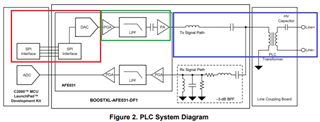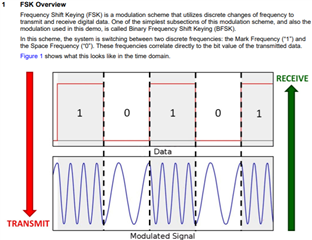Other Parts Discussed in Thread: OPA521
Hello,
I am considering AF031 for a my new product development.
For PLC, I am trying to understand how FSK modulation is carried out by AF031.
I searched TI.com but could not find a document showing such details.
Basically, my question is how do I program AF031 to operate in FSK?
Is there a document showing details on how AF031 transmits digital data using FSK?
Adding further, I am referring AF031 datasheet, and I read below text on 1st page.
It is ideal for driving low impedance lines that require up to 1.5 A into reactive loads.
Could you please elaborate this text from the end application perspective?
Also, to get a reliable performance from AF031, do I have to go with 4 layer PCB(signal + GND + Power + Signal)?
Thank you for looking into this support request.




